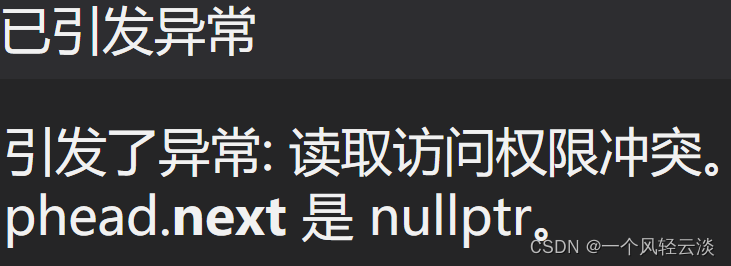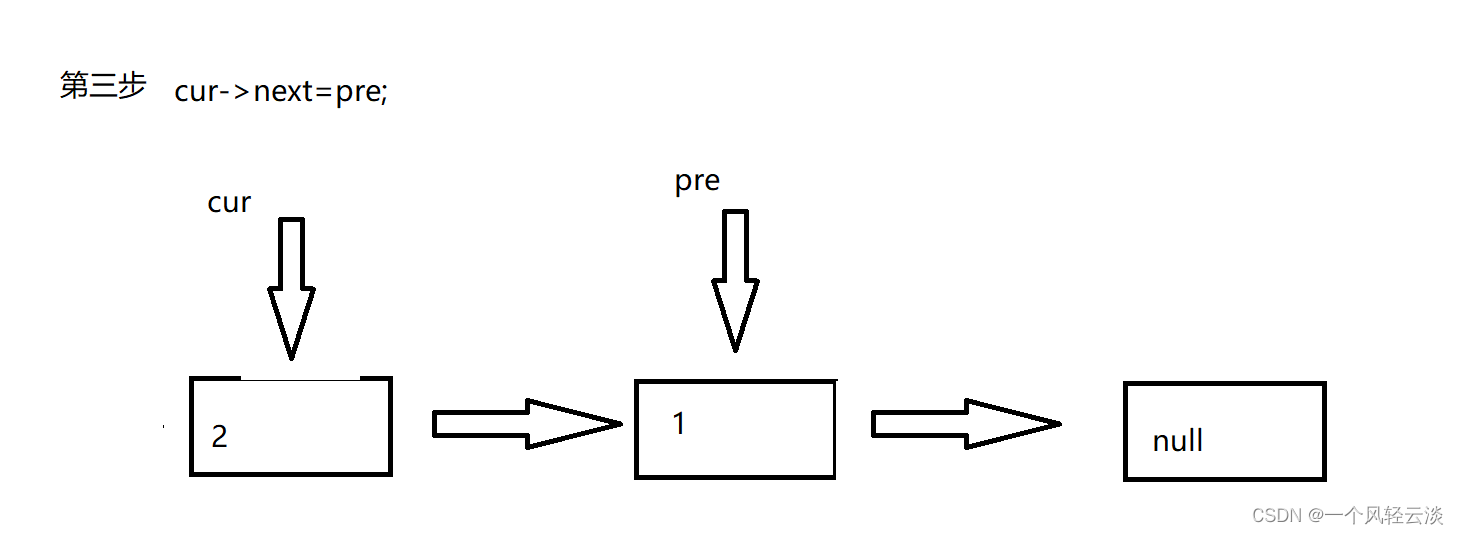题目描述如下:

思路分析:
我们在对数组进行反转的时候,通常定义俩个指针,一个指向首元素,一个指向尾元素,然后借助一个中间变量,将俩者交换,然后首元素++;尾元素--;重复操作直到头元素大于等于尾元素。
但链表不同,它的空间是动态分配,即地址不一定是连续的。
那么如何实现呢?
头插
我的想法是用三个指针,先分别记录下前面三个的结点。即pre ,cur,next;
先将pre ->next=NULL;然后cur->next=pre ,这个时候我们实现了第一次头插,接下就是我们最喜欢的喜欢的过程了,将pre,cur,next这三个值更改,进行循环
即pre=cur,cur=next,next=next->next;
什么时候结束循环呢?那就是cur=NULL结束,但我们需要在对代码按上述操作的时候还需要一些小技巧!为什么?因为cur 为NULL时,在上一次循环中,next已经为NULL,我们接着操作next=next->next;是一个不合理的操作,即

在这里我们可以用一个判断来进行;如果next!=NULL;我们才next=next->next; 这样就可以异常(由于next=next->next 是为下一次循环做铺垫的,故对于最后一次没影响在里面)
画图分析是一个程序员不可忽视的一部分,我们下面通过图来描述下我的思路吧!




这就是我描述的过程。
这也是基本情况之一,我们还应该注意,如果链表中无数据,或者只有一个数据是不需要进行操作!
以下是代码实现:
/**
* struct ListNode {
* int val;
* struct ListNode *next;
* };
*
* C语言声明定义全局变量请加上static,防止重复定义
*/
/**
*
* @param pHead ListNode类
* @return ListNode类
*/
struct ListNode* ReverseList(struct ListNode* phead)
{
if (phead == NULL) //如果是空链表直接返回NULL
return NULL;
if (phead->next == NULL) //如果是只有一个结点的就把头返回就好了
return phead;
struct ListNode* pre = phead;
struct ListNode* cur = phead->next;
struct ListNode* next = cur->next;
pre->next = NULL;//头插
while (cur!=NULL)
{
cur->next = pre;
pre=cur;
cur = next;
if(next!=NULL)//异常处理
next = next->next;
}
return pre;
}
想要练习这个题,可以通过牛客网,以下是链接:
























 758
758











 被折叠的 条评论
为什么被折叠?
被折叠的 条评论
为什么被折叠?










